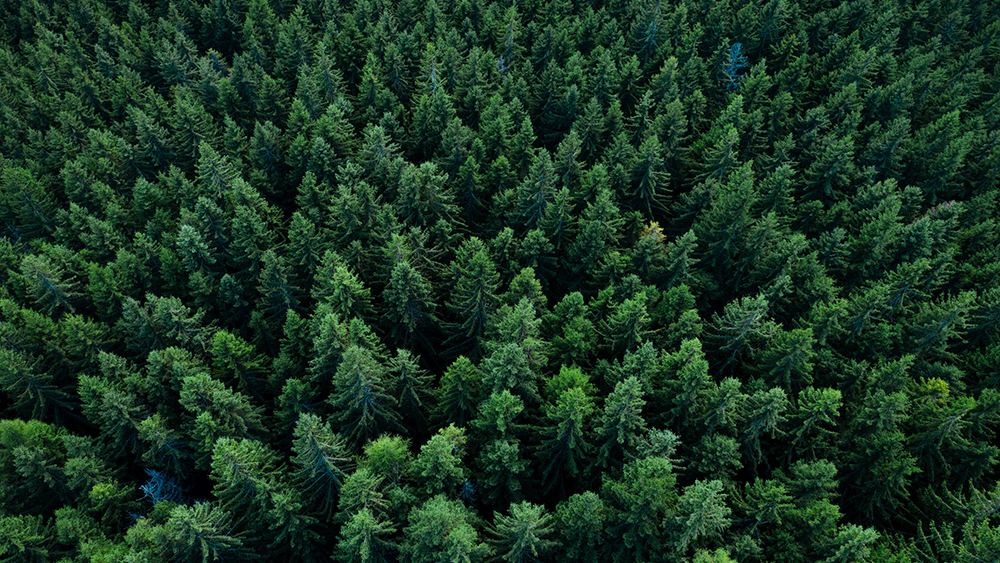
The Parliamentary Commissioner for the Environment says New Zealanders needs to consider whether the country is establishing the forests it wants in the future, and should phase out forestry offsets for fossil emissions from the New Zealand Emissions Trading Scheme (NZ ETS).
The environment watchdog has released a new report examining forestry drivers in NZ, finding that just as past policies have created the country’s forests of today, NZ’s future forests will reflect policies made around forestry now.
“We may live to regret our current approach as it is driving a wave of land use change with significant environmental, economic and social risks,” Commissioner Simon Upton said.
Upton is concerned the NZ ETS continuing to allow fossil fuel emitters to purchase unlimited forestry offsets could pose significant risks for future generations.
The NZ ETS prices emissions by charging certain sectors of the economy for the greenhouse gases they release into the atmosphere. In NZ, these sectors include forestry, liquid fossil fuels, stationary energy, industrial processes, synthetic greenhouse gases, and waste.
The NZ ETS was set up to help NZ meet its 2050 net emissions target and international obligations under the Paris Agreement.
In a media briefing on Tuesday, Upton said if NZ continues to emit carbon dioxide and fails to reduce gross emissions, more and more forests will need to be planted.
This in turn will “lock up” large areas of land and carbon forestry, which will then remove future land use options and cause further disruption to rural communities, he said.
“Future generations will also be faced with the costs of maintaining a much larger forestry estate in a warming world,” Upton said.
Upton said he wanted to make it clear that he did not take issue with production pine forestry.
He described production forests that have been planted where they can be safely harvested as “the backbone of an important industry”.
“Radiata pine has and will continue to have a very important role in New Zealand's economy. You site it appropriately and manage it well and it provides a sound economic return and local employment for products destined for both domestic and export markets.”
But he told media there was a “deeply flawed assumption” at the heart of the ETS that long lived carbon dioxide emissions in the atmosphere could be offset by carbon storage in forests.
“For this to be true, these forests would need to effectively remain there forever to match the life of the carbon emissions, something that cannot be guaranteed. Fire, disease and extreme weather events as a result of climate change all threaten these forests now,” he said.
“As an alternative to pine, many New Zealanders are calling for larger scale native afforestation. That is easier said than done. Successfully establishing native forests is much more expensive and takes a great deal more effort,” Upton said.
Instead, Upton believes despite the risks, improving opportunities for alternative species and management regimes is worth exploring as some alternative species have traits that make them better suited for specific areas.
Upton’s report has recommended the Government phase forestry offsets for fossil emissions out of the NZ ETS, or at least reform the permanent forest category in the NZ ETS.
“This should include requiring permanent forest owners to have a realistic long-term management plan for the forest, and creating categories, with associated rules, for different types of permanent forests,” the report said.
The Commissioner’s report also recommended the Ministry for the Environment (MfE) investigate ways to guarantee forestry companies cover the costs of the environmental damage they cause, including levies and revised regulation.
Climate Change Minister Simon Watts and Agriculture and Forestry Minister Todd McClay introduced new rules back in December 2024 to limit farm to forestry conversions entering the ETS.
Those changes include:
- A moratorium on exotic forestry registrations for Land Use Classification (LUC) 1-5 actively farmed land.
- An annual registration cap of 15,000 hectares for exotic forestry registrations on LUC 6 farmland.
- Allowing up to 25% of a farm’s LUC 1-6 land to be planted in forestry for the ETS, ensuring farmers retain flexibility and choice.
- The ability for landowners to have their LUC categorisation reassessed at the property level.
- Excluding specific categories of Māori-owned land from the restrictions, in line with Treaty obligations, while ensuring pathways for economic development.
- Transitional measures for landowners currently in the process of afforestation who can demonstrate an intent to afforest prior to 4 December 2024.
5 Comments
You cannot 'offset' the burning of carbon which has been underground (out of circulation) for longer than all human evolution. You are simply ADDING it to the above-ground arena.
And that arena is our habitat. Offsetting was a fudge way of trying to carry on modernity, as were EVs, as is the whole Conservation thing, when you step back and look at it.
And it hasn't worked. Upton correctly points out that we are stealing from the future; raiding their options. That, done unknowingly, is theft. Knowingly, it is arguably fraud. Both major, and most minor, political parties are culpable.
From here? A crash-transition to a regime/way of life not involving fossil energy. Of course, the lack of energy input will mean we won't be supporting a national-scale government.... so few join those dots...
Yep, offsets = BAU.
What's the other expression: extend and pretend.
Upton ridin' the gravy train for all it is worth. Where is kiwi DOGE when you need it?
"Upton said if NZ continues to emit carbon dioxide".
"New Zealand was a net CO2 sink of −38.6 ± 13.4 million tonne C year−1."
A Comprehensive Assessment of Anthropogenic and Natural Sources and Sinks of Australasia's Carbon Budget
https://agupubs.onlinelibrary.wiley.com/doi/10.1029/2023GB007845
New Zealanders emit at First-World rates; per head, near the worst in the world.
Weaseling out of that intrusion on tomorrow's wellbeing, courtesy only of the fact that we are sparsely populated, is - weaseling. Familiar territory, no doubt.
But I also question the Paper to which you incessantly refer: An established, mature forest, is not a carbon sink, merely a static stock. I would appear that until human input, stasis would have been the case. Perhaps soil-carbon was added to, via the forest, but the forest, no - it must have been static. Then we 'cleared' it. Most of it. Was that counted? Or are we conveniently starting the clock at1989, or some such convenient accounting trick?
Nonetheless, or lifestyles are among the most polluting, and - regardless of whether we do the right thing or not - we are in trouble with the pending readjustment.
"An established, mature forest, is not a carbon sink," Try and wean yourself off the crackpot chicken little websites.
"Dr Sperlich, and NIWA principal technician Ross Martin, will be collecting air samples as part of research into the native Fiordland forest to determine exactly how much carbon it is absorbing. Previous NIWA research suggested the forest is acting as a huge carbon sink, absorbing a lot more of the greenhouse gas carbon dioxide than previously thought."
https://www.royalsociety.org.nz/research/fiordland-air-sharing-secrets-…

We welcome your comments below. If you are not already registered, please register to comment.
Remember we welcome robust, respectful and insightful debate. We don't welcome abusive or defamatory comments and will de-register those repeatedly making such comments. Our current comment policy is here.